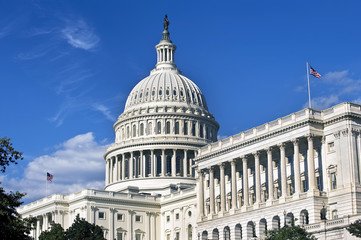Political scientists, historians, and sociologists of the 1960s–80s grew uncomfort- able with the implication that elites were the motor of history, even as they condemned the ‘‘naive’’ assumptions of dispersed power so dear to pluralism. Sociologists and historians made vital contributions to knowledge by disputing the reigning ideas about social movements of the poor and marginalized that had marked post-Second World War scholarship. American Greenbackers and Popu- lists, once condemned as clownish or dangerously atavistic factions of an otherwise healthily modernizing polity (or worse, as proto-fascists), were subjected to new and much more rigorous analyses that revealed them to be impressively rational, inventive democratic reformers responsible for much of the social, political, and economic progress of later periods (McMath 1975; Schwartz 1976; Goodwyn 1976; Pollack 1987).
His own participation in the civil rights movement of the 1960s led Doug McAdam (1982) to undertake an analytical history of the rise of that movement that set out a whole new theory of social movement formation and interaction with the state, one that stressed grassroots organizational resources and the opportun- ities available to movements of the disadvantaged in times of serious elite conXict. By the end of the 1980s, the Xaws in previous journalistic and literary works on populism and other ‘‘petit-bourgeois,’’ presumably status-obsessed movements (work typiWed by Hofstadter 1955) were clearly revealed, and the superWcial connections made between American dissidents and European fascists were no longer sustainable (Brinkley 1982).
These path-breaking movement studies exploited primary sources and (in the case of Michael Schwartz and Doug McAdam) methods indebted to rational choice and statistical political science, to suggest linkages between past and present movement struggles. William Gamson’s important meta-analysis of the political achievements of ‘‘challenging groups’’ from 1800 to 1945 further clariWed the theoretical insights that could be gained from the historical study of social movements. These studies by sociologists and historians thus contributed sign- iWcantly to the revival of interest in history, and in ‘‘poor people’s movements’’ (the title of a 1977 book by sociologists Piven and Cloward) among political scientists, but their focus was on the emergence of dissident organization and strategy in the context of political economy, not on the development of political institutions. It remained to link group struggles ‘‘from below’’ to the dynamics of institution formation and development.
Sociologists moving into the developing sub-Weld of politics and history made important contributions to this linkage. Theda Skocpol, a pioneer of politics and history and of American Political Development (HI’s foremost vehicle in the United States), turned her attention from political elites to dissident social organ- izations with her 1992 book, Protecting Soldiers and Mothers: The Political Origins of
Social Policy in the United States. Connecting a ‘‘maternalist’’ cultural ethic and the
hard work of women’s local and national movement organizations in the late nineteenth and early twentieth centuries, Skocpol traces the modestly successful eVorts of voteless women to inXuence social policy for women and children (and, ultimately, to win suVrage). Another political sociologist, Elisabeth Clemens, published in 1997 The People’s Lobby, an important analysis of the honing of lobbying skills and strategies by farm, labor, and women’s groups targeting state legislatures in and after the 1890s. The emergence of energetic grassroots organizations, linked in state and national associations that paralleled the structure of federalism, not only produced an outpouring of new state legislation in the progressive era, but created the template for the intermediary political institutions so intimately involved in US politics from that era forward.
In 2003, Theda Skocpol took another important look at the interaction between the national state and social organizations in Diminished Democracy, a richly detailed account of the rise and decline (after about 1950) of voluntary civic, occupational, and fraternal organizations in the post-Civil War United States. In this book, she lays out not only the extraordinary level of group membership in (often cross-class) civic organizations, but also their diverse political agendas and contribution to reform. Then, in a fascinating twist on the presumed direction of group inXuence to government action, Skocpol describes the numerous instances in which national oYcials turned to the voluntary groups for assistance in the First and Second World Wars. The large voluntary associations became important purveyors of war-related services, and most prospered as a result of the wartime state–group cooperation (though, one may ask, at what cost in autonomy and future eVectiveness?).




